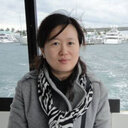Noninvasively Imaging Subcutaneous Tumor Xenograft by a Handheld Raman Detector, with the Assistance of an Optical Clearing Agent.
Keywords
Abstract
A handheld Raman detector with operational convenience, high portability, and rapid acquisition rate has been applied in clinics for diagnostic purposes. However, the inherent weakness of Raman scattering and strong scattering of the turbid tissue restricts its utilization to superficial locations. To extend the applications of a handheld Raman detector to deep tissues, a gold nanostar-based surface-enhanced Raman scattering (SERS) nanoprobe with robust colloidal stability, a fingerprint-like spectrum, and extremely high sensitivity (5.0 fM) was developed. With the assistance of FPT, a multicomponent optical clearing agent (OCA) efficiently suppressing light scattering from the turbid dermal tissues, the handheld Raman detector noninvasively visualized the subcutaneous tumor xenograft with a high target-to-background ratio after intravenous injection of the gold nanostar-based SERS nanoprobe. To the best of our knowledge, this work is the first example to introduce the optical clearing technique in assisting SERS imaging in vivo. The combination of optical clearing technology and SERS is a promising strategy for the extension of the clinical applications of the handheld Raman detector from superficial tissues to subcutaneous or even deeper lesions that are usually "concealed" by the turbid dermal tissue.




